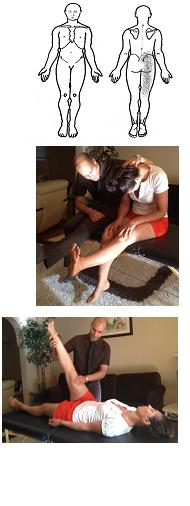SLR vs. Slump ...do BOTH!
Reference:Majlesi J, et al The sensitivity and specificity of the Slump and the Straight Leg Raising tests in patients with lumbar disc herniation. J Clin Rheumatol. 2008 Apr;14(2):87-91.
If a patient has pain in the back of their thigh, is it referral from a facet joint? The SI joints? Myofascial referral? The hamstrings muscle? Or is it neural tissue mechanosensitivity from an irritated lumbar nerve due to a disc herniation?
Which of the two is a better clinical test for detecting a disc herniation …the Slump or the straight leg raise (SLR) test?
The Slump test was found to be more sensitive (0.84) than the SLR (0.52) in patients with lumbar disc herniations. This means that if the Slump test is ?ve, you can to some degree rule out a large disc herniation!
However, the SLR & Slump tests were found to have similar specificity, 0.89 and 0.83 respectively. This means that if both SLR & Slump are +ve (i.e. pain shooting into the leg) it is likely to be due to a disc herniation.
Personal Comment: I strongly recommend using the both the SLR and the Slump test on all patients with lumbo-pelvic pain to help identify neural / dural sensitivity.
However, these studies must be taken with a grain of salt as the sensitivity and specificity is based on the study patient selection. I personally see many patients with central sensitization where both SLR & Slump are ‘positive’ on them yet they certainly do not have a relevant disc herniation! (E.g. fibromyalgia)
Posted on: July 05, 2012
Categories: Lumbar Spine


